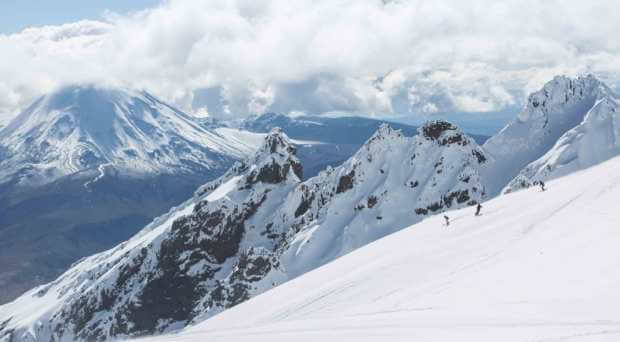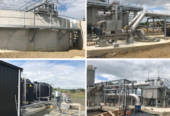We have five geological features in New Zealand that have recently received recognition for being “of the highest scientific value”, with “the world’s best demonstrations of geologic features and processes”. That’s pretty cool.

Janine Krippner
The International Union of Geological Sciences (IUGG) has released its second list of 100 sites, aptly named The Second 100, and this includes Rotorua’s geothermal fields (Ahi-Tupua), our mighty Ruapehu volcano, the Muriwai megapillow lava flows, Maruia Falls, and the Fjords and towering sea cliffs of Fiordland.
I have to admit that I hadn’t even heard of the Muriwai megapillow lava flows and I don’t know how I missed this impressive formation. Pillow lavas form when lava is flowing through water. A solid crust forms around the leading edge of the lava, causing it to continue forwards as lobes that look a bit like pillows, form a pile of them in the end. These were erupted from an underwater volcano near Waitākere 17 million years ago, and are particularly impressive for their size, with the individual “pillows” reaching five metres across. This is not common. There are pillow lavas at many spots around the world, but they are usually up to one metre across.
This gorgeous outcrop (exposed section of rock) also show a crazy assortment of lava columns that form when a lava flow cools and contracts, with the most famous of these being the Giant’s Causeway in Northern Ireland. I will have to go check these out for myself.
It’s great to see the geothermal features of Rotorua getting the appreciation they deserve. While living in the United States it was often assumed that I had been to Yellowstone, but honestly it was not high up on my list of volcanoes to visit. Having experienced the incredible geothermal features near home many times over the years, plus the impressive caldera volcanoes also in our back yard, I don’t feel like I have missed out. It would be incredible to visit Yellowstone, especially for the wildlife, but there were so many other volcanoes I want to see more. We are spoiled here with world-class geological features, and I am happy to see them recognised.

Mt Ruapehu
Ruapehu is a very deserving volcano for this list. It is a mix of incredible, diverse eruptive history, a rich cultural context, and our relationship with it through the ski fields and hiking. It is also the source of our worst volcanic incident with the 1953 Christmas Eve Tangiwai rail disaster. The cross-over of humans and volcanoes brings so much more complexity to the science, and it also enriches our lives in the many ways that I touch on through this weekly column.
This is a good reminder of how fortunate we are here in New Zealand. With all the struggle that so many of us are facing right now, it can be hard to remember. With similar struggles playing out around the world, and many that are much, much worse, we are here in a relatively peaceful, relatively safe, and undeniably beautiful country.
As I am working to figure out my next steps with the lack of job options in my field, one thing is certain. After 11 years overseas and the many incredible places I have visited, there is nowhere else I would rather be.








